TS
mayor.bejo
(Mengenal lebih jauh) MIca missile



The Matra BAe Dynamics Mica is an innovative lightweight missile that can both intercept incoming missiles and fire at multiple targets. MICA stands for “Missile d’Interception, de Combat et d’Autodéfense”. A clear statement that this single missile system had to cover all facets of the air-to-air battle - BVR (Beyond Visual Range) interception, dogfight and self-defence. The Mica is an advanced medium-range missile that is the French counterpart to the more capable American AMRAAM missile. Variants include active radar and infra-red homing, providing a unique ability to select target-engagement options for both short and medium-range intercepts. The 4A active anti-air seeker was developed by Dassault Electronique within the framework of a European cooperation, both for the Mica air-to-air missile and, in a slightly different version, for Eurosam's Aster surface-to-air missile.
MICA is the reference multi-mission air-to-air missile system for the Rafale and the latest versions of the Mirage 2000 combat aircraft. Developed by MBDA, MICA provides a high level of tactical flexibility. Breaking away from established doctrines, the very high technical standards set by MICA are the result of an innovative operational concept. These evolved from the global understanding of the air-to-air battlespace and the appreciation of the need for a weapon system that would ensure asymmetry to win in aerial combat.
The MICA system comprises 2 versions: MICA (EM) RF with an active radio frequency seeker and MICA IR with a passive dual waveband imaging infrared seeker. Both missiles are fully qualified and in mass production, being currently flown by numerous air forces worldwide.
A “full MICA” configuration on an aircraft such as Rafale gives a very flexible and high BVR fire power for Air Superiority during all kind of missions: combat air patrol, sweep, deep strike, recce, maritime operations. MICA missile in BVR mode introduces a new way of waging air combat by offering multi-target capability at extended ranges with the two interoperable guidance systems to hamper enemy counter measures. All carried (EM) RF or IR MICA missiles are fully BVR, being operable with or without data link target designation updating.
In short range (SR) combat, a MICA configuration on an aircraft offers a full "new generation" capability thanks to the outstanding performance of the missile (extreme agility and manoeuvrability). An additional advantage lies in the possibility of launching MICA with its seeker (namely IR) either locked-on to the target or not, while still featuring all BVR qualities.
The same MICA missile provides a dual use (air-launched or surface-launched). The surface-launched variant, named “VL MICA”, is launched vertically either from naval- or ground-based air defence systems. Lightweight and compact, MICA was designed as a "multi-aircraft" missile that could easily be integrated onto any modern fighter aircraft on a maximum of available store stations according to its eject or rail launch capabilities without significantly reducing aircraft performances.
On 11 June 2007, MBDA’s MICA multi-mission air-to-air missile successfully destroyed its intended target following launch from an operational French Air Force Rafale F2 aircraft. The firing, part of an ongoing training programme being carried out by French Air Force pilots with MICA, took place at the DGA’s CELM missile launch test facility at Biscarrosse off the south west Atlantic coast of France.
For this latest firing, a complex combat scenario was created with a Rafale pilot being chased and threatened by an “enemy aircraft” (actually a C22 drone) approaching at a distance of several nautical miles from its rear sector. A second Rafale, acting as wingman, acquired the target and provided target designation information to the first aircraft via the Link 16 data link.
On being launched, MICA carried out an extremely sharp 180° manoeuvre in its inertial guidance phase, a manoeuvre made possible by the missile’s exceptional agility provided by its thrust vector control feature. MICA then advanced towards the designated target which it destroyed. The MICA missile used during this training session was the RF variant, featuring an electromagnetic active seeker.
Patrick Tramier, MBDA’s Director of Programmes, said: “This latest success proves MICA’s extreme efficiency in carrying out an out of sector self defence role with target data provided by a support aircraft. It is just one of a series of successful tests within the current training campaign which has shown MICA’s exceptional performance against targets flying at different altitudes and speeds as well as targets carrying out evasive manoeuvres and within a countermeasures environment”.
By 2011 MICA wasy in operation around the world, integrated, in the air-launched variant, on Rafale, on the latest versions of the Mirage 2000 and, in the near future, on Mirage F1, and, in the vertical-launched (VL) variant, on various naval platforms or groundbased air defence systems. Besides the French Air Force and Navy, MICA already counts six export countries as reference customers. The recent integration of MICA missile on Mirage F1 featured the unique BVR capability with double IR or RF weapon terminal guidance. Such a modernization program provides this type of aircraft with a modern air-to-air BVR capability and thereby a significant new lease of life.
http://www.globalsecurity.org/milita...urope/mica.htm
++++++++++++++++++++++++++++++++++++++++++++++++++++++++++++

Description
The MBDA VL MICA (Missile d’interception et de combat aérien, “Interception and Aerial Combat Missile”) is an anti-air multi-target, all weather, fire-and-forget short and medium-range missile system. It is intended for use both by air platforms as individual missiles as well as ground units and ships, which can be equipped with the rapid fire VL MICA Vertical Launch System. VL MICA provides an optimum level of defence against a wide range of targets, including fixed-wing aircraft, helicopters and UAVs. Moreover, its characteristics (fire-and-forget guidance, vertical launch) make it particularly effective against saturation attacks carried out by a large number of low signature targets such as guided bombs or missiles and cruise missiles attacking from any direction (360° coverage). Thanks to its range and altitude, VL MICA’s performance in providing area defence, the protection of highly sensitive civilian or military assets as well as cover for manoeuvring land forces is unmatched by any other low-level air defence system.
Technical Data
Missile launcher unit
Vertical Launch MICA (VL MICA) is a short range, ground based air defence system deploying the MICA fire-and-forget missile, currently the only missile in the world capable of being fitted with either a heat-seeking homing head (VL MICA IR) or with an active, radar homing head (VL MICA RF). This unique capability ensures an outstanding kill probably, even in severe IRCM-ECM environments. The latest version of the VL Mica launcher unit uses a Renault truck chassis with each 4 to 6 missile canister mounted at the rear of the chassis.
Missile
The 112kg vertical launch missile is built in two versions, an active radar Mica RF with a pointed nose cone and a passive infrared imaging Mica IR with a rounded nose. Mica RF has been in production since 1996 and the Mica IR since 2000. Both sensors are robust against jamming. The slim body structure of the missile is identical to that of the original air-to-air Mica. The four L-shaped guidance fins installed at the rear of the body are movable.
Command and control vehicles
Organisation of a typical VL MICA unit is based on a vehicle-mounted shelter-protected Tactical Operations Centre (TOC) also known as the Platoon Command Post (PCP). This is capable of carrying out all Command, Control and Coordination functions, including real-time engagement, mission planning, system monitoring and connection with the higher level of command. The TOC remotely controls a tri-dimensional radar mounted on a separate vehicle and three to six vertical launcher units also mounted o vehicles.
At IDEX 2011 defence exhibition, MBDA is revealing two new systems to coordinate the firing of Mistral and VL Mica. The IMCP (Improved Missile Control Post) is the first element of this set up. It integrates, within a shelter mounted on an all-terrain vehicle, a command and control unit and latest generation 3D radar capable of detecting and identifying aerial targets at ranges of 80 km. IMCP is an evolved version of the Mistral Coordination Post of which more than 40 have already been sold. It comprises an operator console very carefully ergonomically designed to provide a work space within which the unit commander can carry out his mission under optimum conditions.
The second new system presented by MBDA is the PCP (Platoon Command Post). This modular command system is a direct derivative of the VL MICA Tactical Operations Centre (TOC) which has been developed in close cooperation with the French Air Force. PCP allows the commander to control multi-layer surface-to-air defence units, linking Mistral and VL MICA missile launchers. The system carries out the interface role between the various units responsible for coordinating the air space and, if necessary, its self-coordination with the PCP units deployed in neighbouring zones. The detection, identification and tracking functions are carried out via a link to the IMCP which, in this case, is completely remote-controlled by one of the three operators manning the PCP.
Combat use
A VL Mica unis consists of mobile launch units, each carrying 4 – 6 launchers and a tactical operation center which also links via fiber-optic line to the remote controlled radar, and via VHF radio link, to the firing units. This structure makes it easy to deploy, easy to integrate in within a wider global air defence structure and gives the system a high level of survivability. A VL MICA unit can ensure seamless area protection versus a wide variety of targets, including fast manoeuvring combat jets and cruise missiles
Specifications
Armament
Four missiles MICA by launcher unit
Country user
France
Designer Country
France
Radar and support Vehicles
Tactical Operation Centre (TOC) also named Platoon Command Post (PCP), vertical launcher unit and IMCP (Improved Missile Control Post
Crew
3 operators
Operationall performance
- 10 min. for full deployment
- 15 minutes for launcher reload
- 4 different targets in 6 seconds.
Weight vehicle
? kg
Speed vehicle
? km/h maximum speed on road
Missile
Range max: 20 km
Altitude max: 9,200 m
Warhead: 12 kg
Vehicle Dimensions on road
Lenght, ? m; Width, ? m; Height, ? m
http://www.armyrecognition.com/franc...pictures_.html
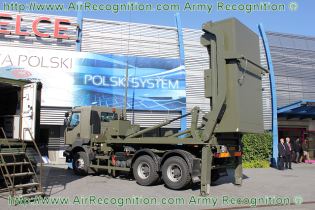
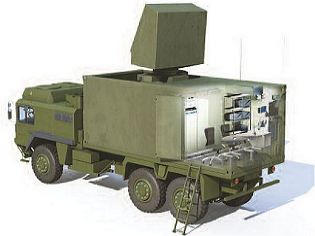
Platoon Command Post (PCP)
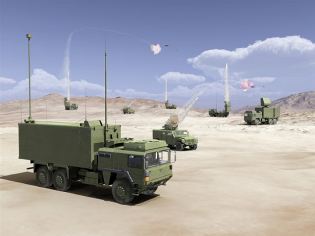
Improved Missile Control Post (IMCP)

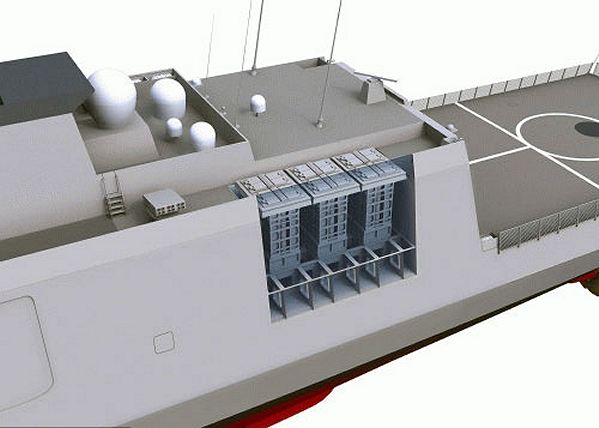
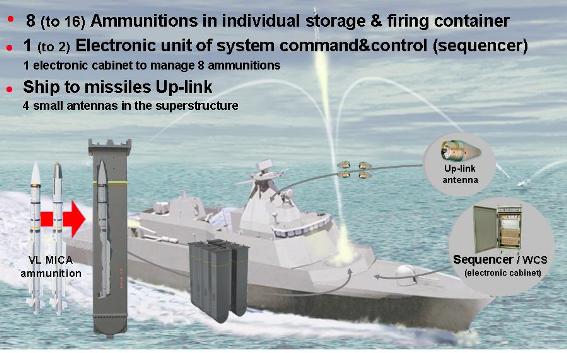

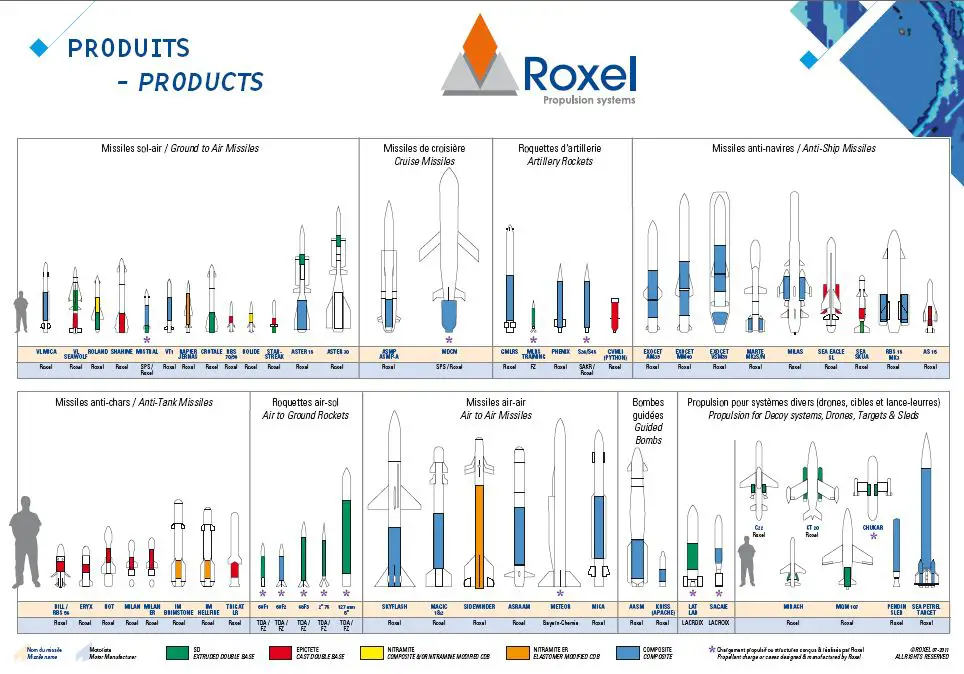 =================================================================
=================================================================mungkin mau TOT juga produk ini?bisa dipasang di darat, laut dan udara. multiguna
0
9.8K
16
Thread Digembok
Mari bergabung, dapatkan informasi dan teman baru!
Militer
20KThread•7.3KAnggota
Urutkan
Terlama
Thread Digembok